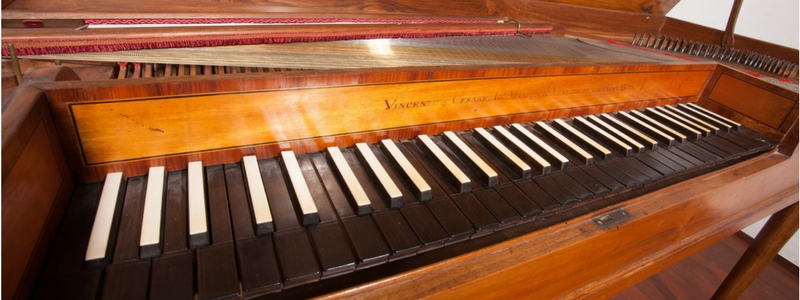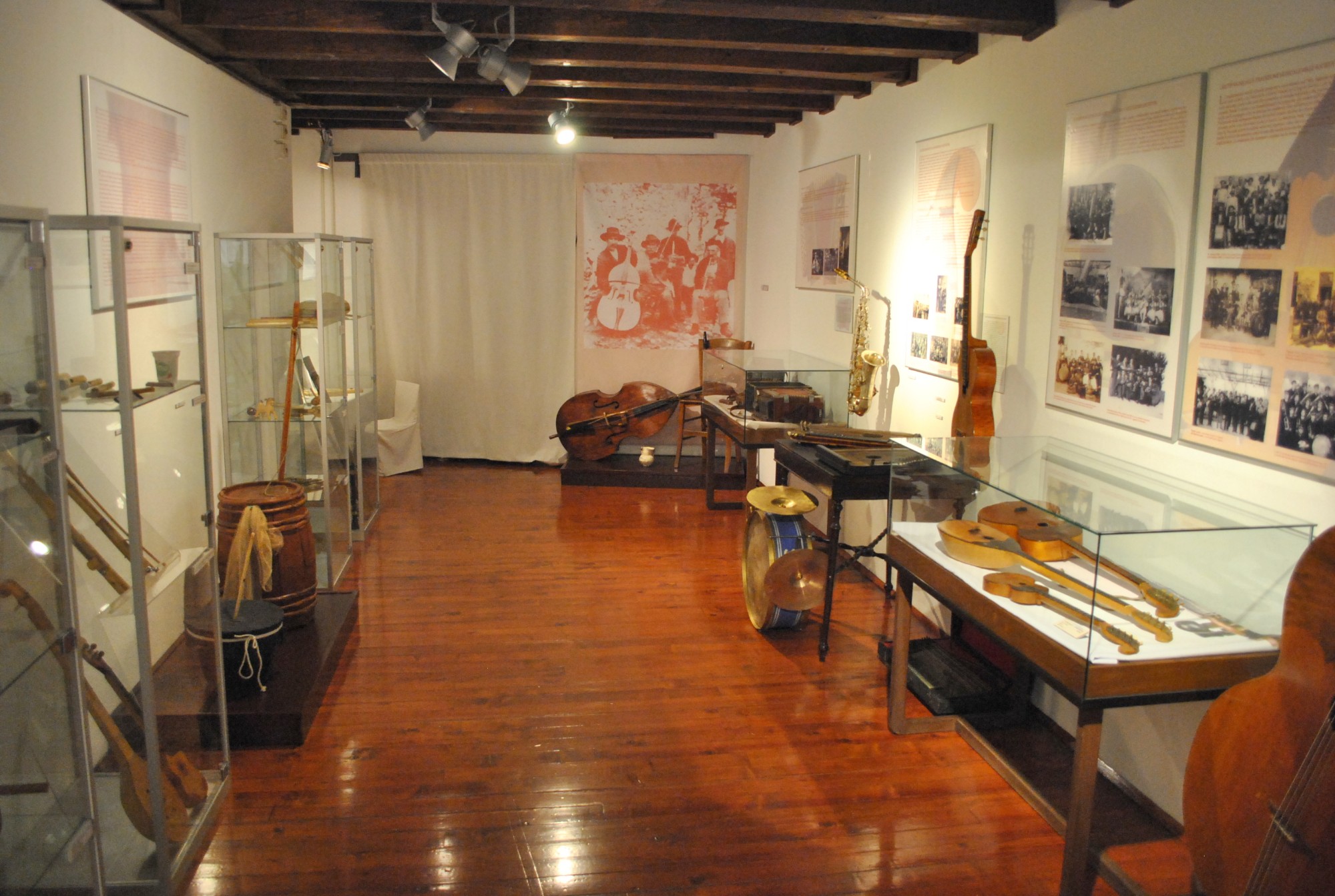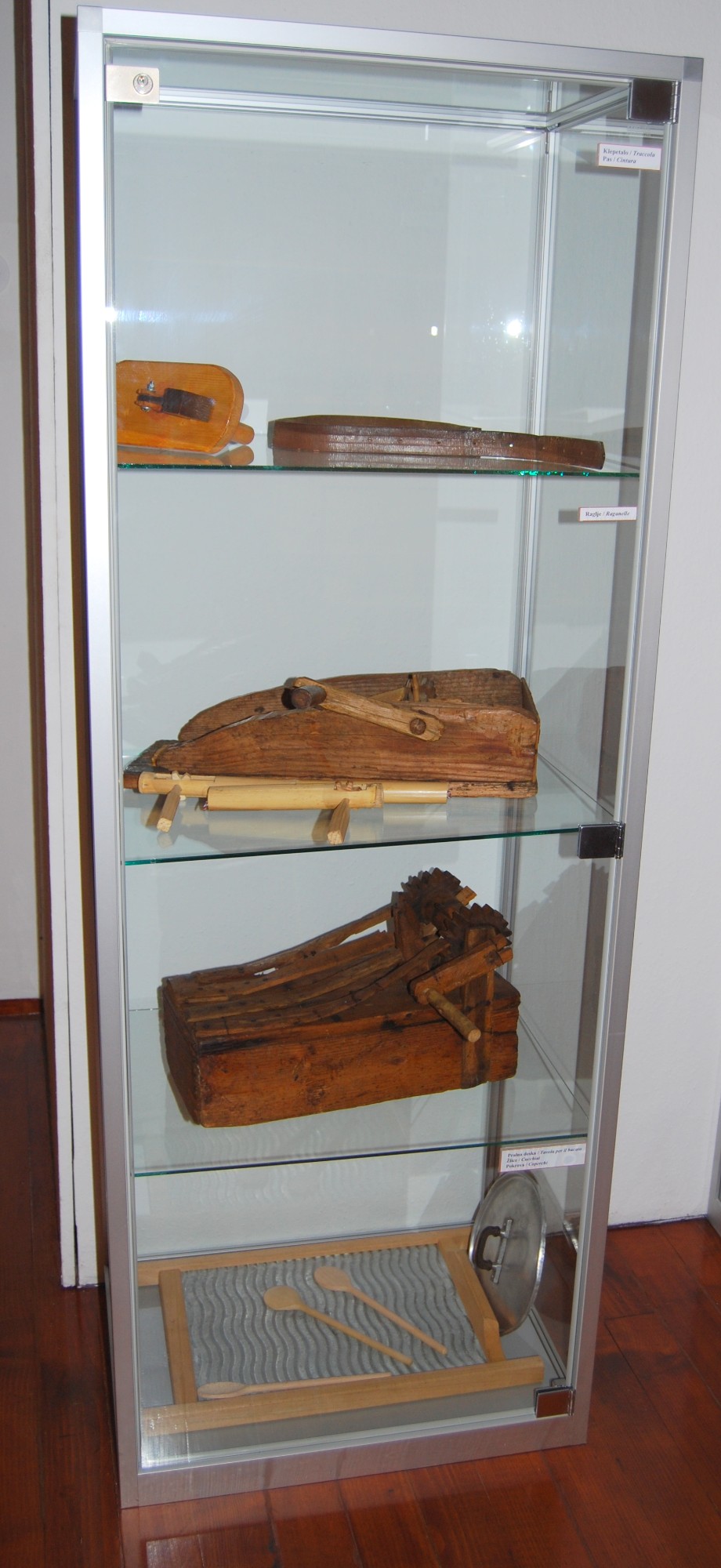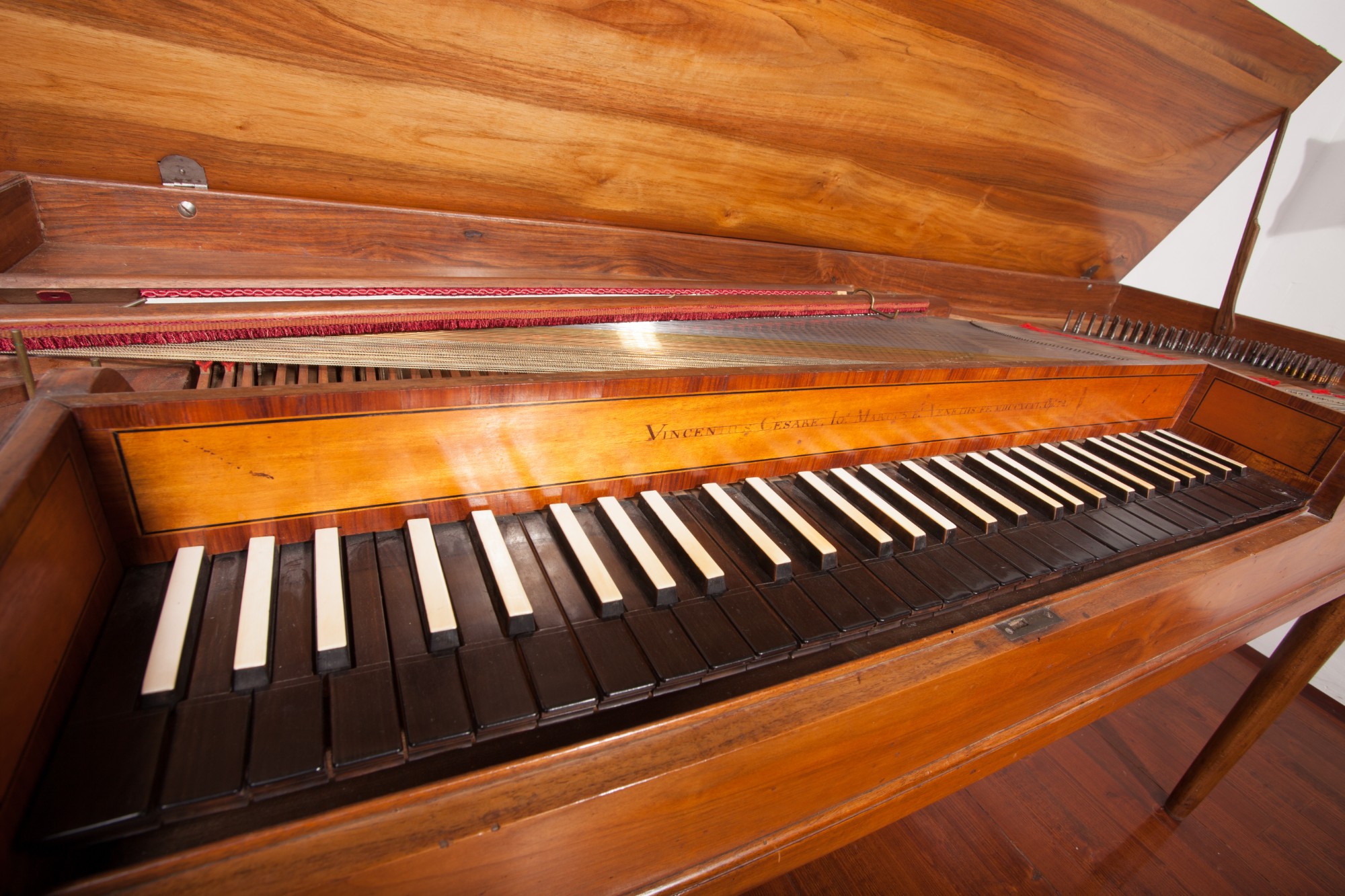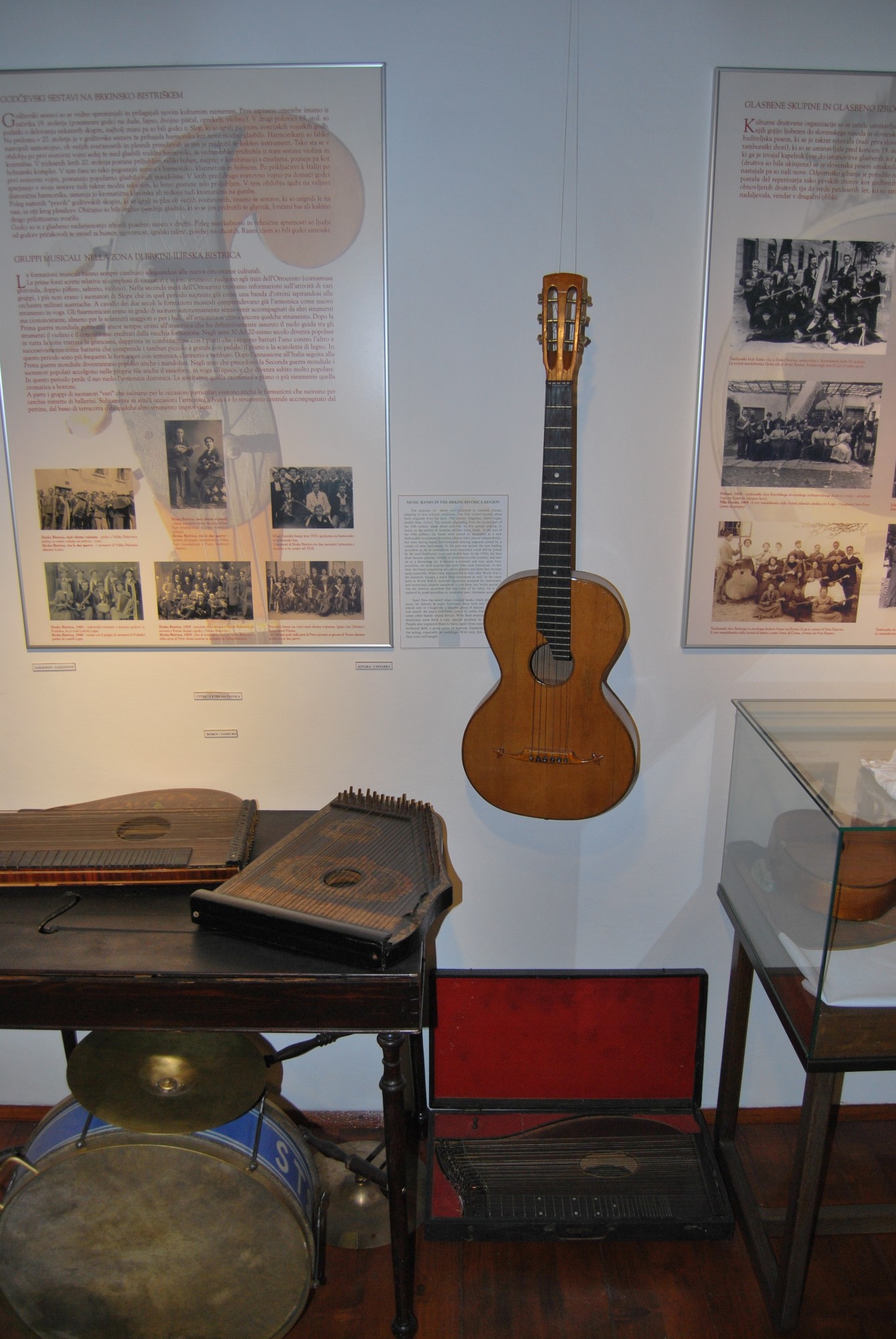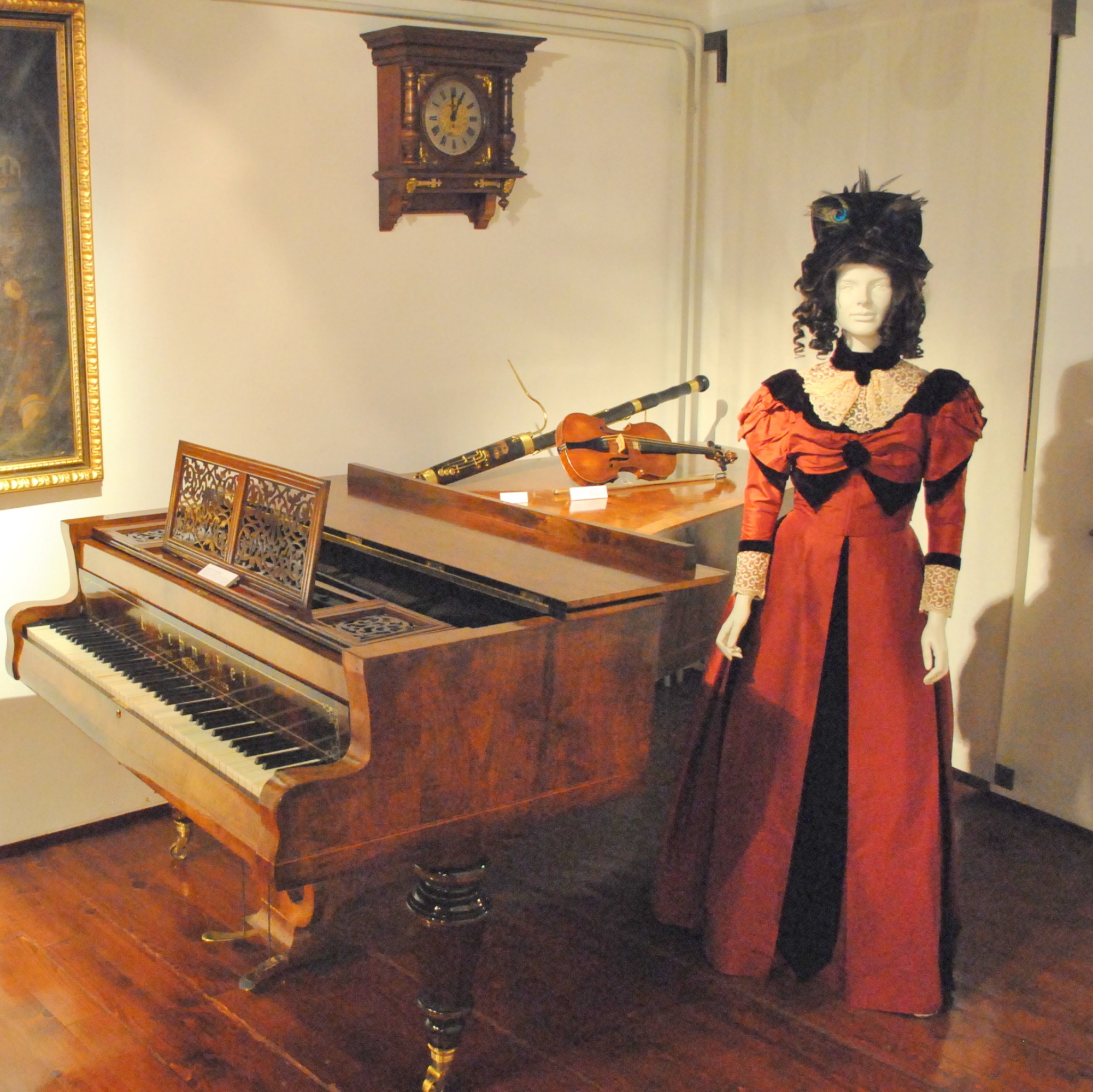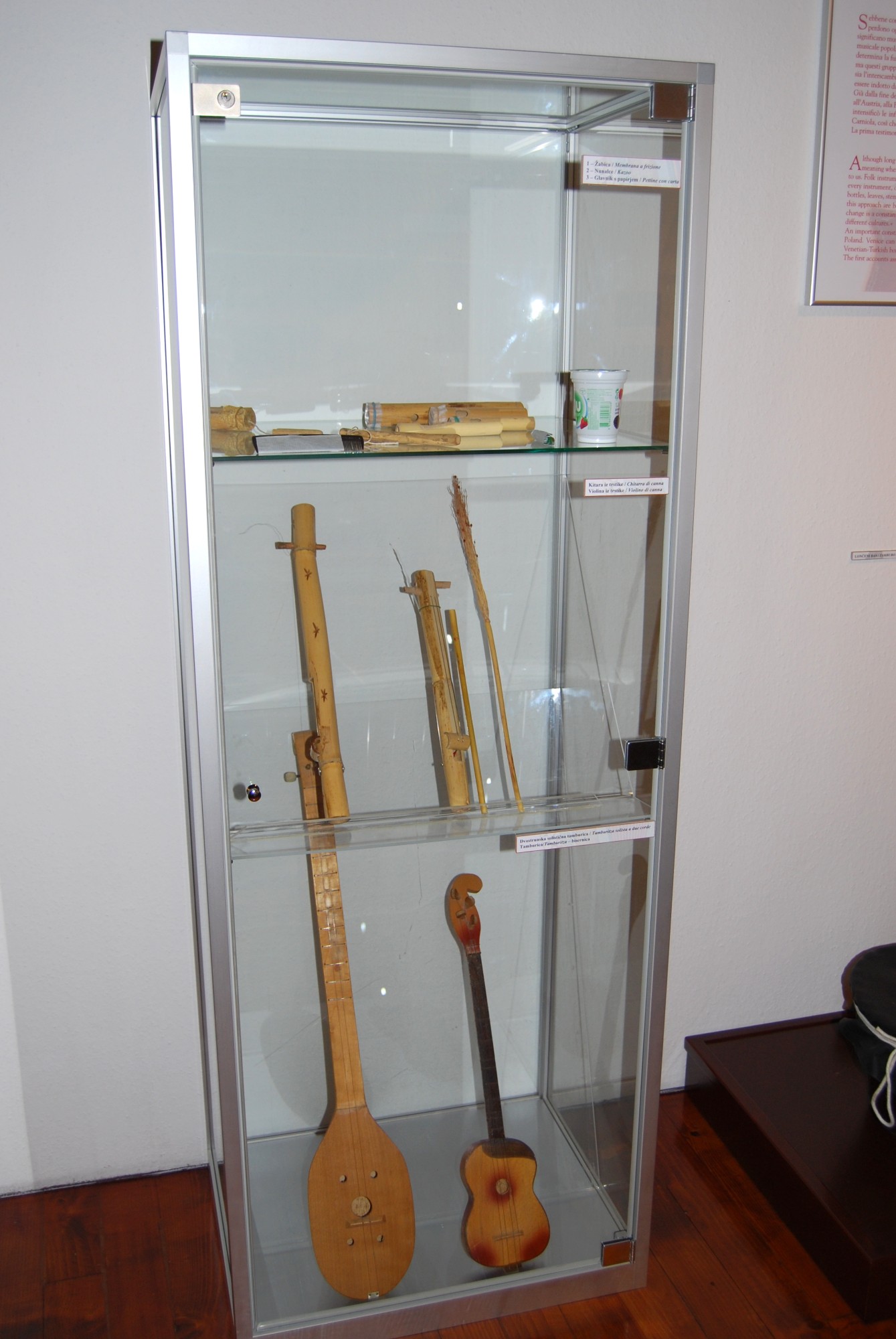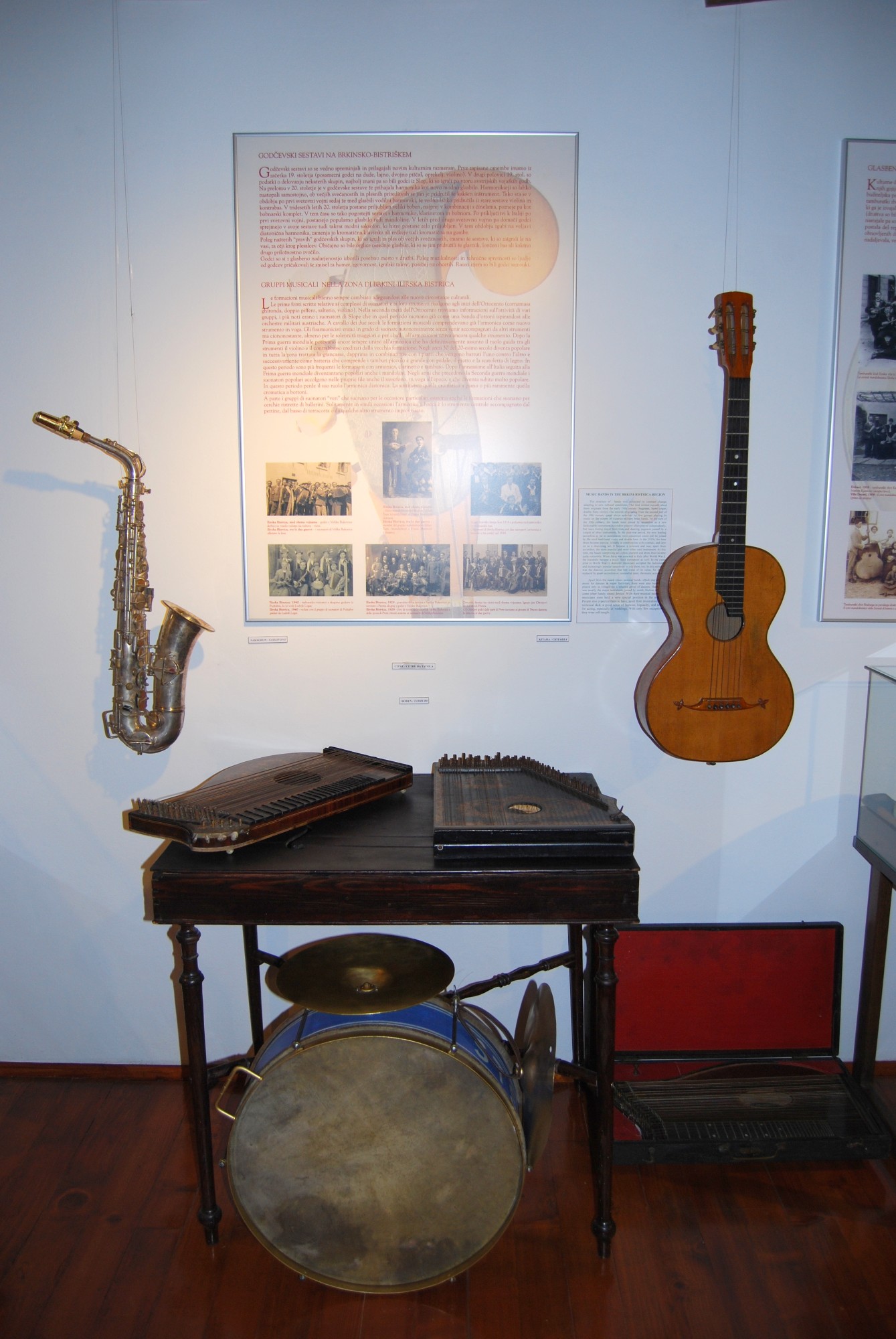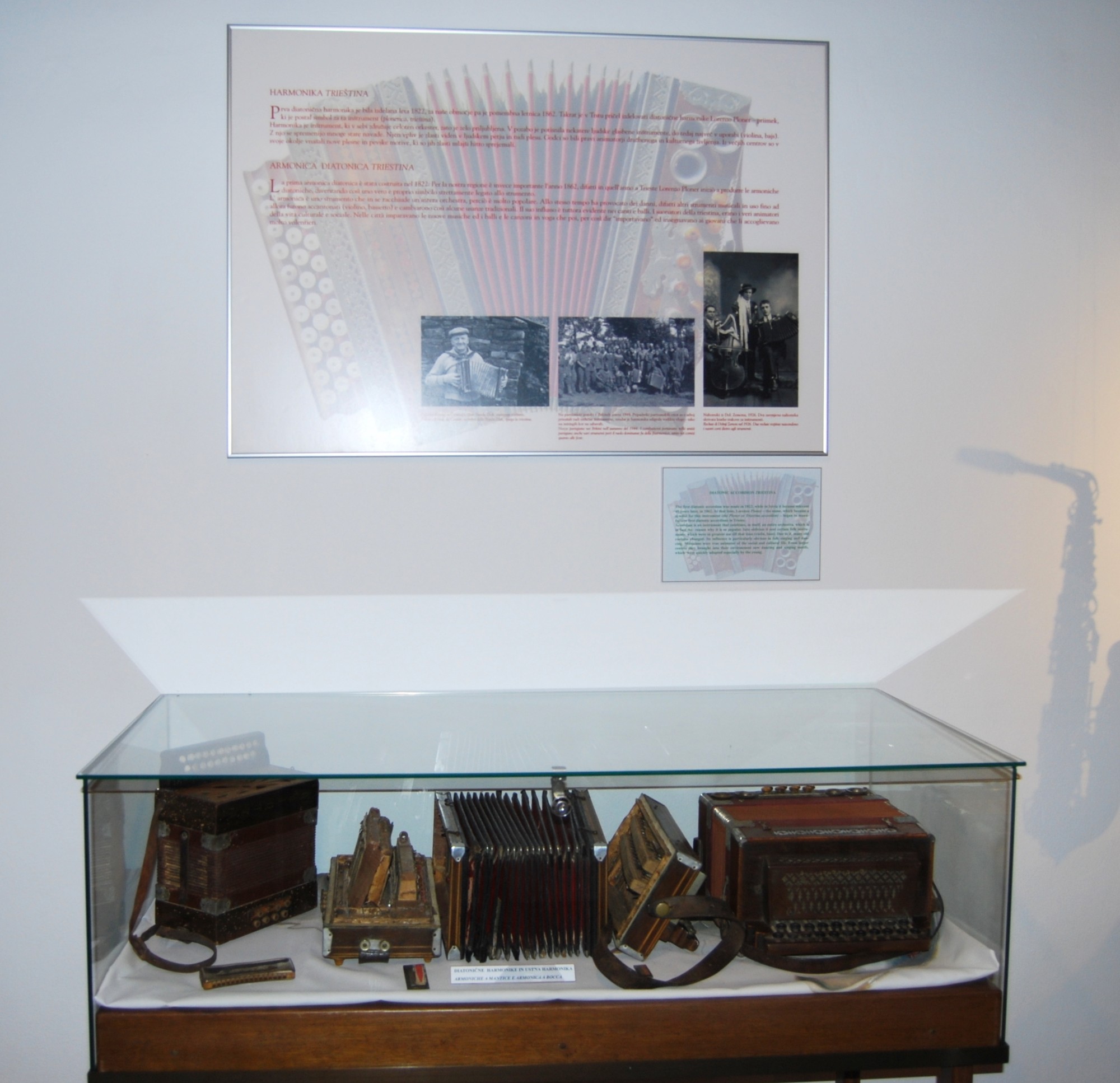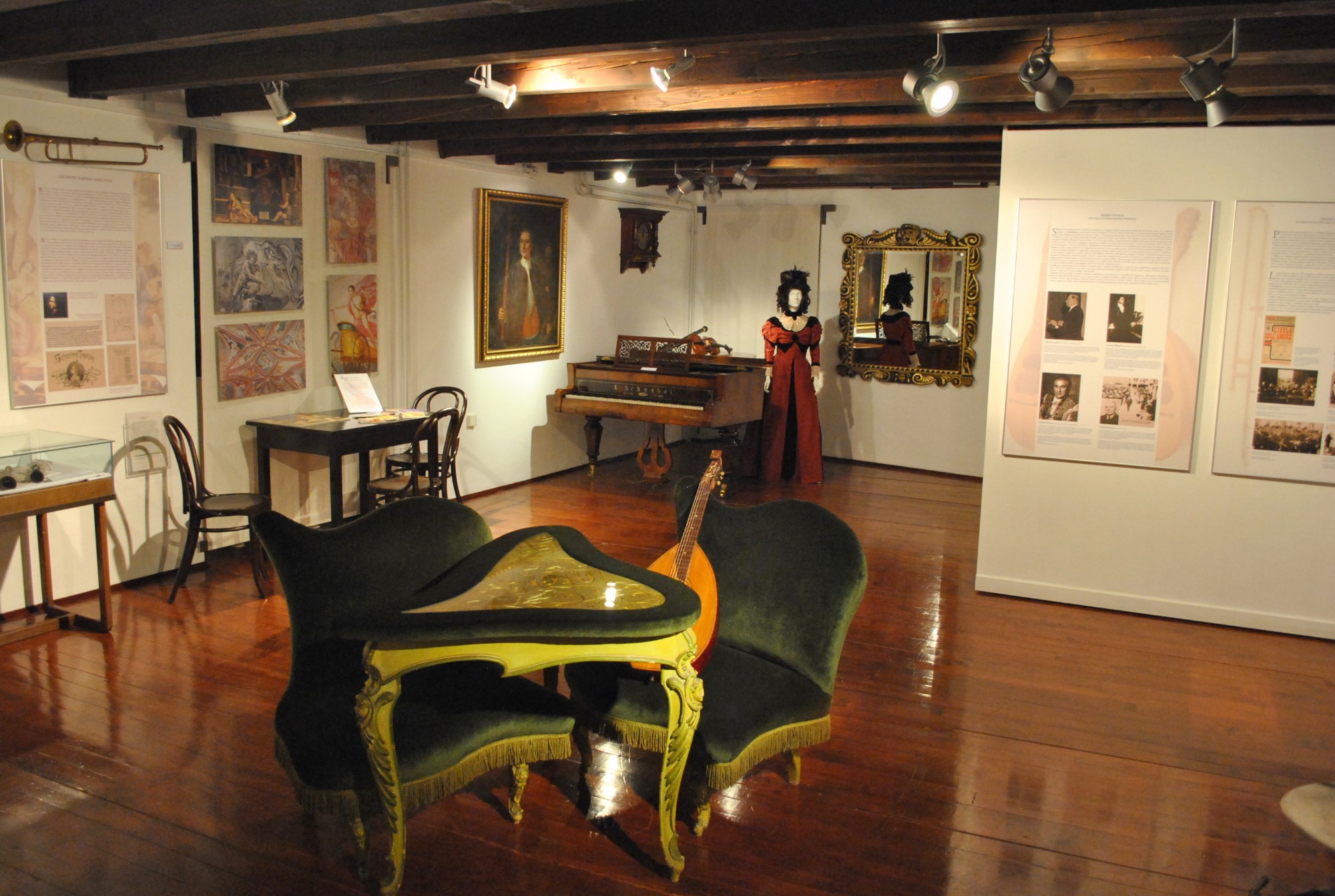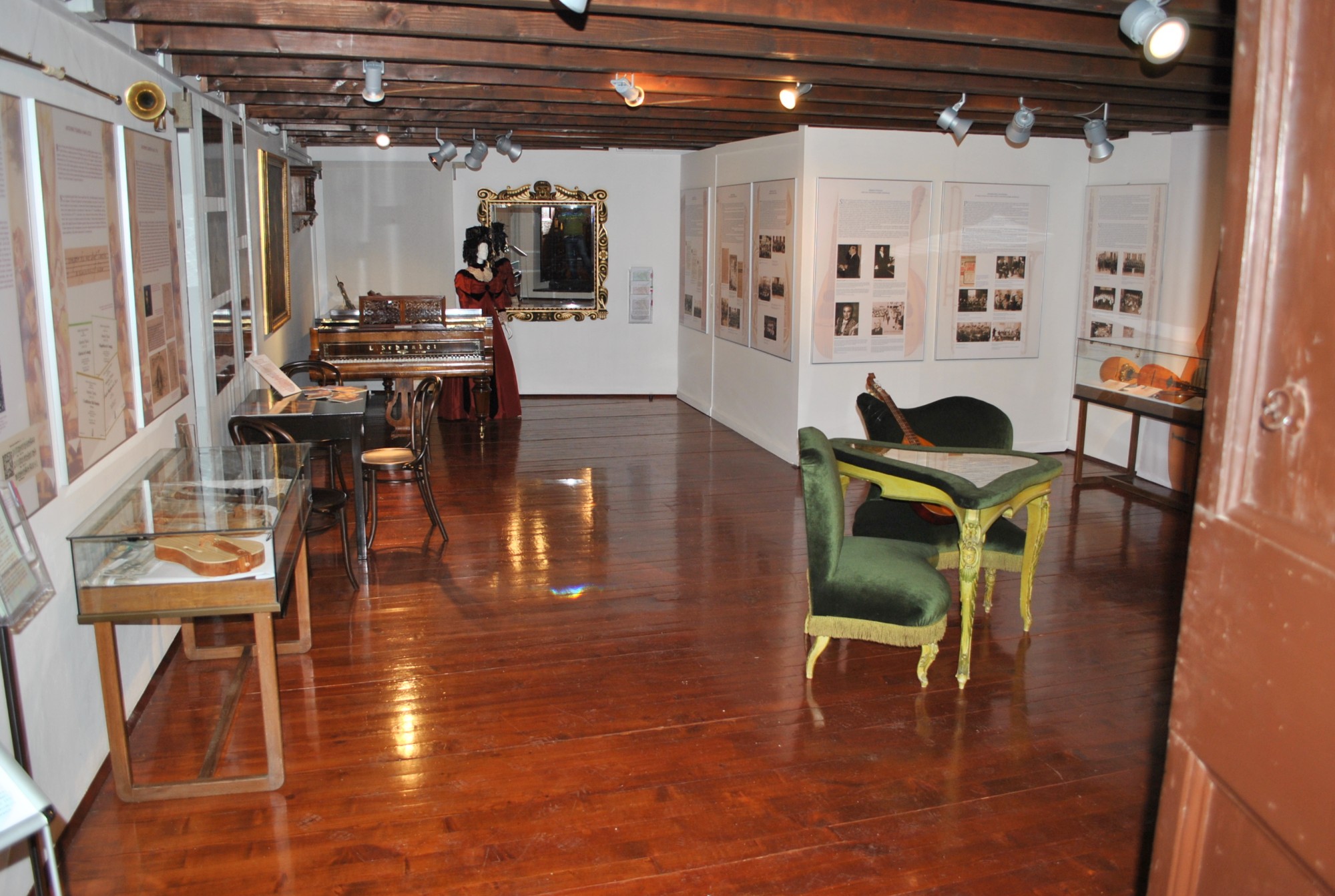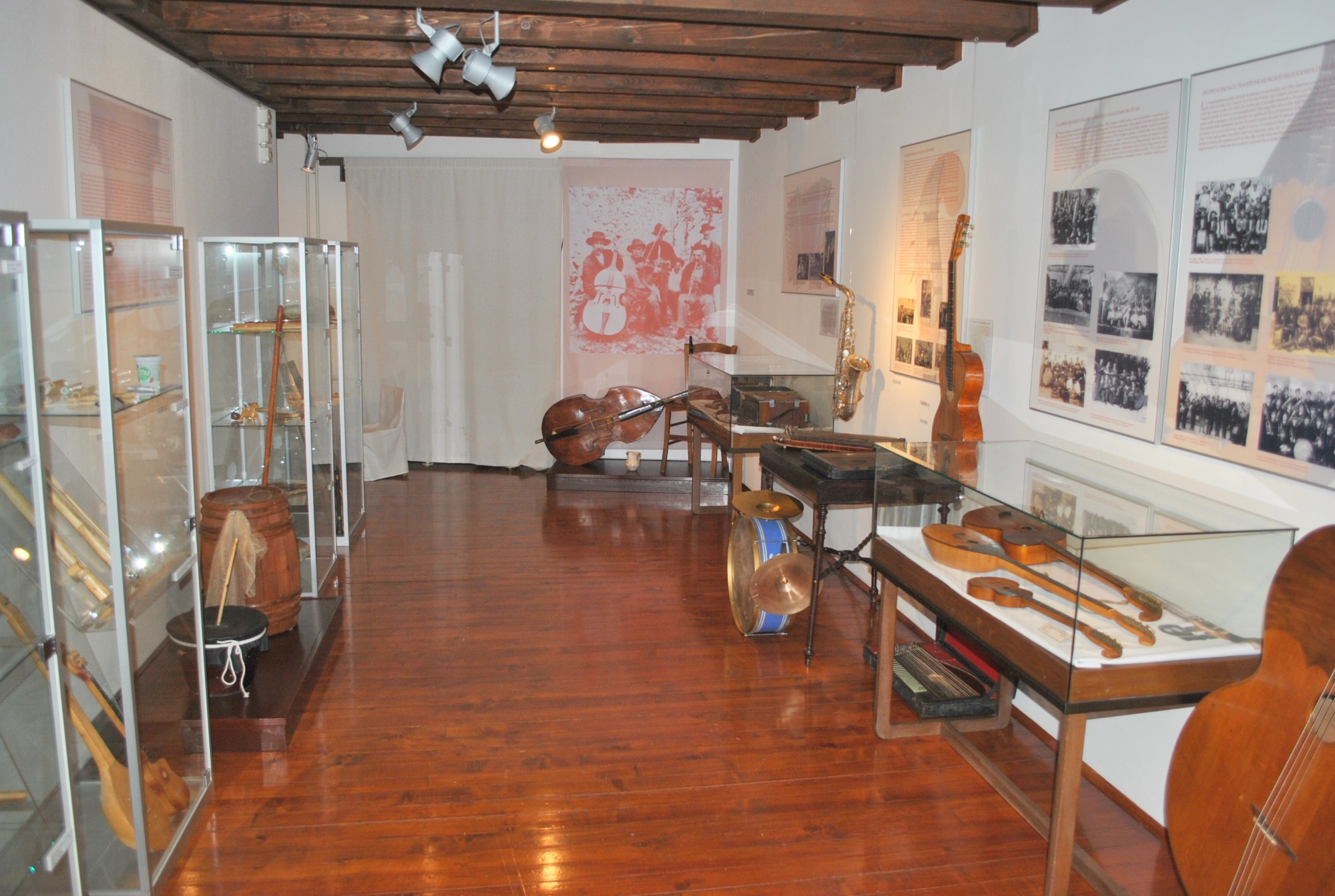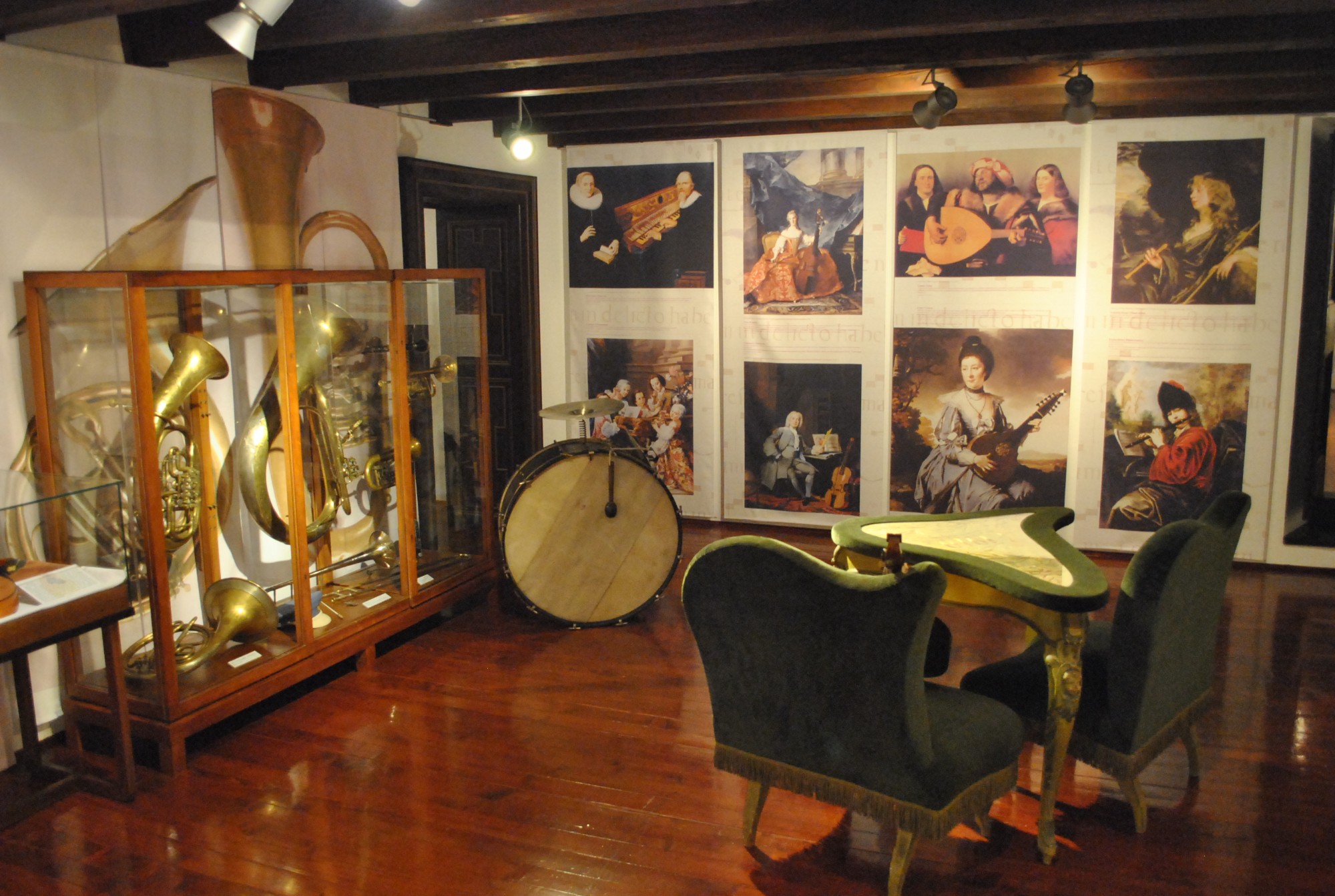Music Collection
Town Musical Life (Belgramoni-Tacco Palace)
The music collection is displayed in two exhibition rooms. The first is dedicated to musical life in coastal towns within the area of present-day Slovenia, practised from the Middle Ages to the end of the 20th century.
Until the 19th century, music was chiefly restricted to church services and the milieus of aristocratic salons and affluent bourgeois families. It was associated with liturgical ceremonies, holidays, festivals and important occasions, and limited in the number of composers and performers. In the 19th century, music developed to include music ensembles playing in squares and streets, and choirs, orchestras and mandolin groups performing in halls and theatres. As music developed into a common social phenomenon, encompassing all social classes, music education was introduced into the official school curriculum, and music schools started to be established. In the light of these changes in music practice and other advances in the musical sphere, including the development of musical instruments and music genres, and the role of the conductor, the scope of the musical domain broadened considerably, although still traditionally confined to church services, holidays and special occasions. Philharmonic societies and various private music societies were established in all three coastal towns. As music teachers were active members of music societies, diverse music ensembles were formed in primary schools, the grammar school, the teacher-training college and the seminary. After World War I, a group of musically trained teachers, working in this area until most of the Italian population was deported in the mid-1950s, became the pillar of Koper’s musical scene. After 1960, with the growing number of amateur and professional musicians playing in various ensembles and organising concerts, musical life revolved mainly around music schools – by that time already Slovenian.
The collection dedicated to an earlier historical context, the legacy created prior to the 19th century, highlights the three most important musicians who worked in the local area or came from it, and whose work has already been the subject of scholarly research. The earliest of these is the composer, organist and capellmeister of the Koper Cathedral, Minorite Gabriello Puliti, a native of Tuscany. Puliti lived in Koper intermittently for ten years in the early 17th century, during which time he published several collections of liturgical and secular compositions. The latter include some works based on texts by poets who were natives of Koper.
Equally a composer, organist and capellmeister of the Koper Cathedral, the works of Antonio Tarsia, born into an old Koper family, were scored for the sole purpose of addressing the needs of the Cathedral chapel, which makes him a composer of local significance.
The most prolific of secular music composers was the illustrious Piran-born Giuseppe Tartini, who spent his childhood in Istria and then worked in Padua, where his musical legacy is kept. One of Tartini’s violins, built in the workshop of luthier Andrea Amati, is on view in the memorial room of his birthplace in Piran.
A special showcase is dedicated to musical instruments built in recent times following representations in mediaeval frescos, paintings or architectural ornaments created in the Slovenian geographical area.
The other musical instruments on show date back to the second half of the 19th and early 20th centuries. The large showcase displays instruments used by a wind band. This type of ensemble, the first to develop and most widespread, consists of members of the woodwind, brass and percussion families of instruments. Wind bands performed outdoors. Larger ensembles, with over 40 members, are called wind orchestras. Town bands developed based on the example of military bands which emerged in the late 18th century. The germs of coastal-town wind bands, which enjoyed their heyday in the late-19th and the 20th century, can be traced back to the first half of the 19th century.
The musical instruments used by members of mandolin consorts, which developed in Koper from the mid-1890s, are on view in the lower display case. The first of these consorts was a female mandolin ensemble of young ladies from higher social circles. Women were known to sing and play musical instruments, initially at social gatherings in aristocratic salons, and later in chamber ensembles and in recitals.
A lute with a flat back is displayed on a settee: an example of an instrument used for family concerts in a domestic setting, an entertainment popular in bourgeois households in the first half of the 20th century.
Capellmeister, the maestro in charge of an ensemble, emphasises the importance of the conductor, a role that was assumed in the second half of the 19th century, leading musical groups within the context of music societies and schools, teaching music at high schools and conducting the municipal wind band. They also served as organists and church chapel-masters as well as composers and arrangers. For lack of suitably qualified staff, all these tasks were initially fulfilled by a single person, and the first conductors were brought from elsewhere.
Band members were dressed in uniforms based on those worn by the military, with insignia in the shape of a lyre.
Rural Musical Life (Gramsci Square)
The last exhibition room is dedicated to musical life in the 19th and 20th centuries in the rural areas of northern Istria and Čičarije on the one hand and Brkini and Ilirska Bistrica on the other. The difference in the historical development of these regions is also reflected in their musical tradition. A distinguishing feature of musical life in the country is the folk music tradition associated with folk music, folk musical instruments and folk musicians. Folk music, played entirely by ear, has been handed down from one generation to the next. The instruments used to make music were highly diverse. The left-hand showcases include homemade musical instruments built from various materials, such as reed, wood and bark. Also featured are various objects that serve a different, practical function in daily life, but take on the role of an instrument on certain occasions, and musical instruments used in observing folk customs and festivals.
Instruments usually obtained from instrument-builders and played by reading music are on show on the right-hand side. The establishment of cultural and educational societies also initiated music education, with schooling provided within the context of these societies. The last case displays instruments used by tamboura ensembles. Wind bands and tamboura ensembles were the characteristic instrumental groups of rural cultural societies.
On view are two unusual instruments that serve the function of an accompanying bass. The earthenware bass is made from a clay pot covered with a punctured animal-bladder membrane, and a stick inserted in the middle. The instrument is played by rubbing the stick with wet fingers. For playing, the bass is placed on a table or tucked under the musician’s arm. It is found throughout Slovenia, with the exception of Istria. Shrovetide figures use this instrument in the Brkini and Ilirska Bistrica regions.
The other curiosity is a kanta bass, a typical Istrian folk instrument made from a fish-salting barrel, with a cord stretched from an aperture and tied to an attached broom handle. It is played by plucking the taut cord.
Also on view are the typical Istrian two-stringed small bass, or bajs, and a violin, instruments often complemented by clarinet and trumpet in group formations. In the early 20th century, the combination of bajs and violin was superseded by diatonic button accordion, popularly known as plonarca (‘plonar accordion’ after its builder, Ploner of Trieste) and in Istria as trieština (‘Triestina’). Capable of imitating the sound of any orchestral instrument, this small accordion is also played by a single instrumentalist without accompaniment.
The music practice of the Brkini and Ilirska Bistrica regions was marked by different musical instruments. As well as violin, the instruments traditionally used were dulcimer and three-stringed small bass (which are not included in the collection), and piano accordion was given precedence over the plonarca. Also widely popular was the zither, an instrument typical of German-speaking areas, and unknown in Istria under the rule of the Venetian Republic.
The instruments most commonly in use in Čičarija, a mountainous plateau lying between Istria and the Brkini and Ilirska Bistrica regions, were bagpipes and dvojnice (an end-blown duct double-flute aerophone), examples of which are on view to the public.
Music with dancing and singing invariably accompanied all life-cycle ceremonies (birth, wedding, death), and customs observed on public and religious holidays. It figured importantly during the Shrovetide season. Two Shrovetide figures are on show, the main characters in a family of carnival masks known as Škoromati (‘Scaramatta’), which are distinctive for the southernmost parts of Brkini (a Škopiti and a Škoromat with bells). Škoromati used to be the bugbear of village children and unmarried young women. Škopiti would scare and chase them with tongs, and the Škoromati with bells would smear their faces with ash. Ash symbolises male virility, and the custom of smearing ash on young people’s faces formed part of the ritual with which Škoromati ensured fertility and thus the survival of the whole community. The bells worn strapped around their waist are classified as folk musical instruments.
Koper Regional Museum, Vlasta Beltram
